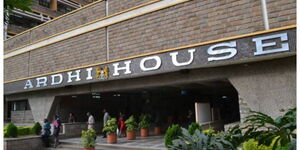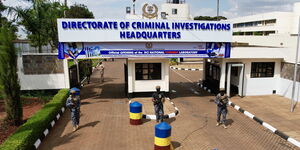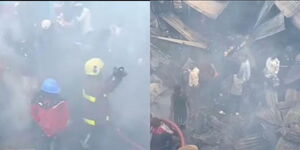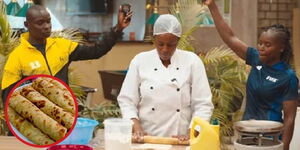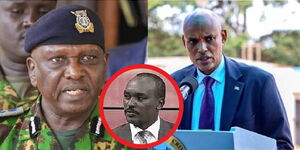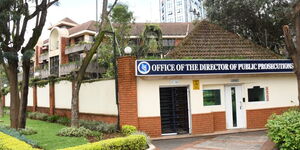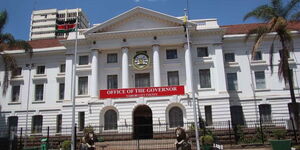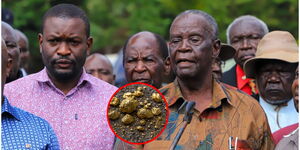Despite the growing use of mobile and card payments, a majority of Kenyans still make their transactions in cash leaving us wide open to the problem of counterfeit notes.
The Central Bank of Kenya is the only authorized issuer of new currencies and its bad news for anyone who finds themselves unwittingly holding a counterfeit note, because they are totally worthless as there is no way of getting it replaced with a genuine one.
If an individual innocently tries to spend a fake note and the retailer finds out that it’s a fake, the retailer is within his/her rights to confiscate and then pass it over to the police.
The individual cannot demand it back nor get any compensation.
The CBK has so far issued notes in the denominations of Ksh 50, Ksh 100, Ksh 200, Ksh 500 and Ksh 1000 in this series.
These notes contain distinct easily recognizable security features to facilitate the detection of genuine notes vis-a-vis forgeries.
According to Central Bank, the number of fake notes in circulation has reduced significantly over the past few years because they introduced a number of new security features making the current banknotes very difficult to forge.
There is plenty of help on the Central Bank of Kenya website, showing how to check for security features on genuine notes.
Here is a summary of the Key Security features to help you distinguish between genuine and fake notes;
1. Portrait Watermark
A three-dimensional portrait of a lion’s head can be seen when the note is held up to the light.
The watermark has a three-dimensional appearance with areas in varying tones of dark and light.
Below the watermark is the value numeral of the banknote i.e 1000, 100 etc. This number can be seen when the note is held up to the light.
Both the portrait and value numeral depict some brightness when held up to the light.
Here is an illustration:
2. Serial Numbers
The serial numbering style is asymmetrical and has progressively larger digits in adjacent positions.
One set of serial numbers appears horizontally, the other vertically.
The vertical serial numbers on the left-hand side of the banknote glow under Ultraviolet (UV) light.
3. See Through Feature
Each of the banknotes has a see-through feature which forms a perfect complete elephant when held up to the light.
When looked at from one side, the image does not form any recognizable feature unless when looked at up to the light.
Here is an illustration:
4. Kenyatta’s Rough Coat
When you touch the collars of Mzee Kenyatta’s coat on the Ksh 1000 note, the feeling should be very rough as illustrated above.
5. Security Thread
All genuine banknotes have a distinct interwoven thread running vertically down the right-hand side of the notes.
When held up to the light, the thread appears as a continuous line and it shows a series of text featuring the denomination numeral of the note and the letters CBK.
The current generation of banknotes features two types of threads:-
For the 1000 and 500 shillings denominations, the thread is thicker and portrays a colour shift when viewed at angles.
On the other hand, the 50, 100 and 200 shilling denominations have a thinner thread silver in colour and do not depict any colour shifts when viewed at angles.
6. Size
All the denominations have different sizes.
The KSh 50 note is the smallest while KSh 1,000 note is the biggest.
For instance, if you get a Ksh 50 note that equals a Ksh 500 note in size, know that it is a fake!
Here are the sizes:
1. Ksh 50 note. (Fifty Shillings)
Size: 138mm * 72mm
Colour: Brown and Green
Portrait: The first President of Kenya Mzee Jomo Kenyatta
Theme: Mombasa Tusks and Nomads with Camels
2. Ksh 100 note. (One Hundred Shillings)
Size: 141mm * 74mm
Colour: Purple
Portrait: The first President of Kenya Mzee Jomo Kenyatta
Theme: Kenyatta International Conference Centre and the statue of Kenya's founding President
3. Ksh 200 note. (Two Hundred Shillings)
Size: 144mm* 76mm
Colour: Brown Green
Portrait: The first President of Kenya Mzee Jomo Kenyatta
Theme: Cotton picking
4. Ksh 500 note (Five hundred Shillings)
Size: 147mm * 78mm
Colour: Multicolor. Black Red and Green
Portrait: The first President of Kenya Mzee Jomo Kenyatta
5. Ksh 1000 note (One Thousand Shillings)
Size: 150mm* 80mm
Colour: Brown
Portrait: The first President of Kenya Mzee Jomo Kenyatta
Theme: Elephants
How to replace old Kenyan Shillings notes with newer ones
The Central Bank of Kenya (CBK) accepts damaged/torn notes.
If you have a Kenyan note that is cut into pieces, you can return it to the CBK and get it replaced with a new one.
Currency is considered damaged or unfit when it is mutilated, torn or marked with ink.
It is typically removed from circulation when it is brought into the Central Bank, through deposits from commercial banks, and sorted out from fiat currency.
However, members of the general public who find damaged currency can also bring it to commercial banks or to the Central Bank offices and have it replaced, on condition that the following requirements are met:
1. They have not been deliberately mutilated
2. The currency must be genuine
3. The currency must be more than half and continuous
4. The banknote should bear at least one complete serial number
To return it to the CBK, you simply contact them through comms@centralbank.go.ke
Alternatively, you can exchange the note to any commercial bank in Kenya.
How Kenyan notes are printed
The Central Bank of Kenya has allowed only one company, De La Rue, to print genuine money in Kenya.
De La Rue designs, integrate, manufacture and deliver banknotes, banknote paper, polymer, and security features to their customers around the world to ensure their currency is secured against the threat of counterfeit and fraud.
The company has a special machine, which are certified.
These machines print only notes and coins in such a way that no one can replicate a genuine note.
Once the company gets an order for printing notes, they start working based on the number requested.
The process takes months because of the many processes the printing of notes requires.
The company has no freedom of printing more than the specified notes. Normally; Central Bank identifies the number of notes to be printed.
Then they generate unique serial numbers. The serial numbers are then forwarded to De La Rue.
Why De La Rue is the only company allowed to print genuine notes
1. They print more banknotes than any other commercial printer in the world.
2. They have a world-leading design team who have won 14 design awards since 2007.
3. They develop customer-focused innovations, launching 8 new security features in the last 5 years.
4. They support customers with consultancy including DLR Analytics, public education, circulation trials, banknote training, banknote policy, and counterfeit analysis.
5. They are recognised as the Global experts in counterfeit detection and play a key role in training the industry through their acclaimed Advanced Banknote Manager Course


